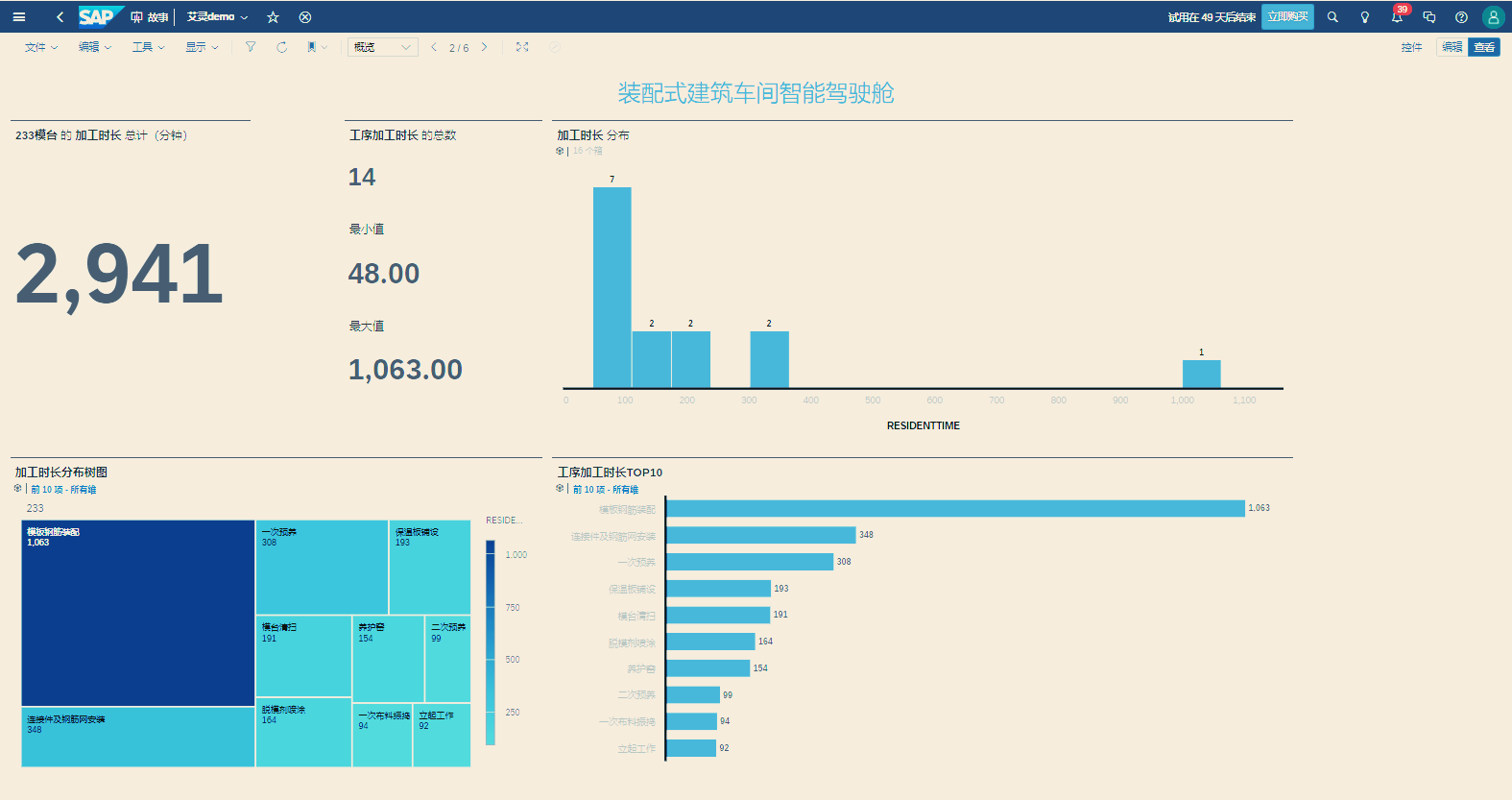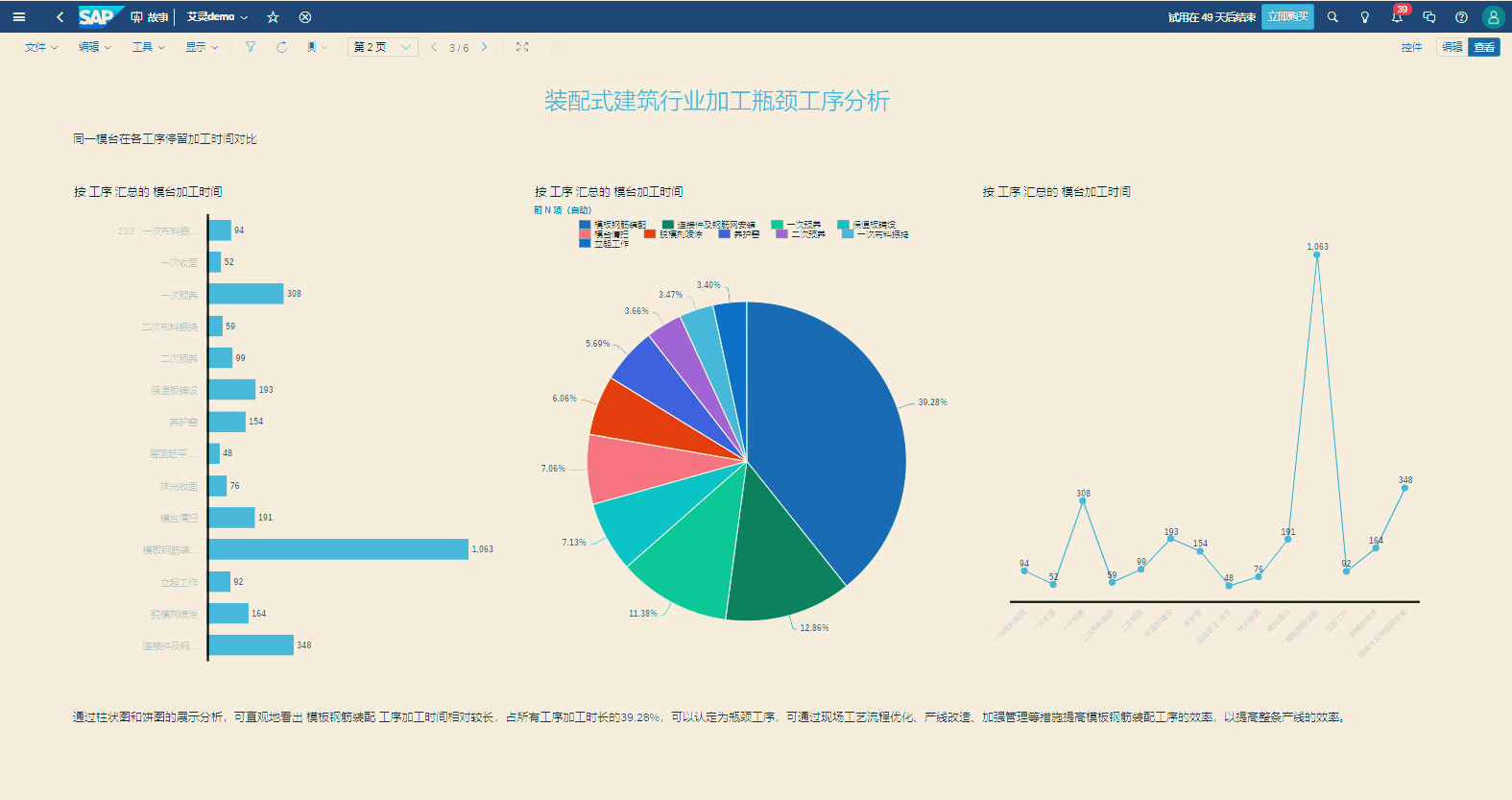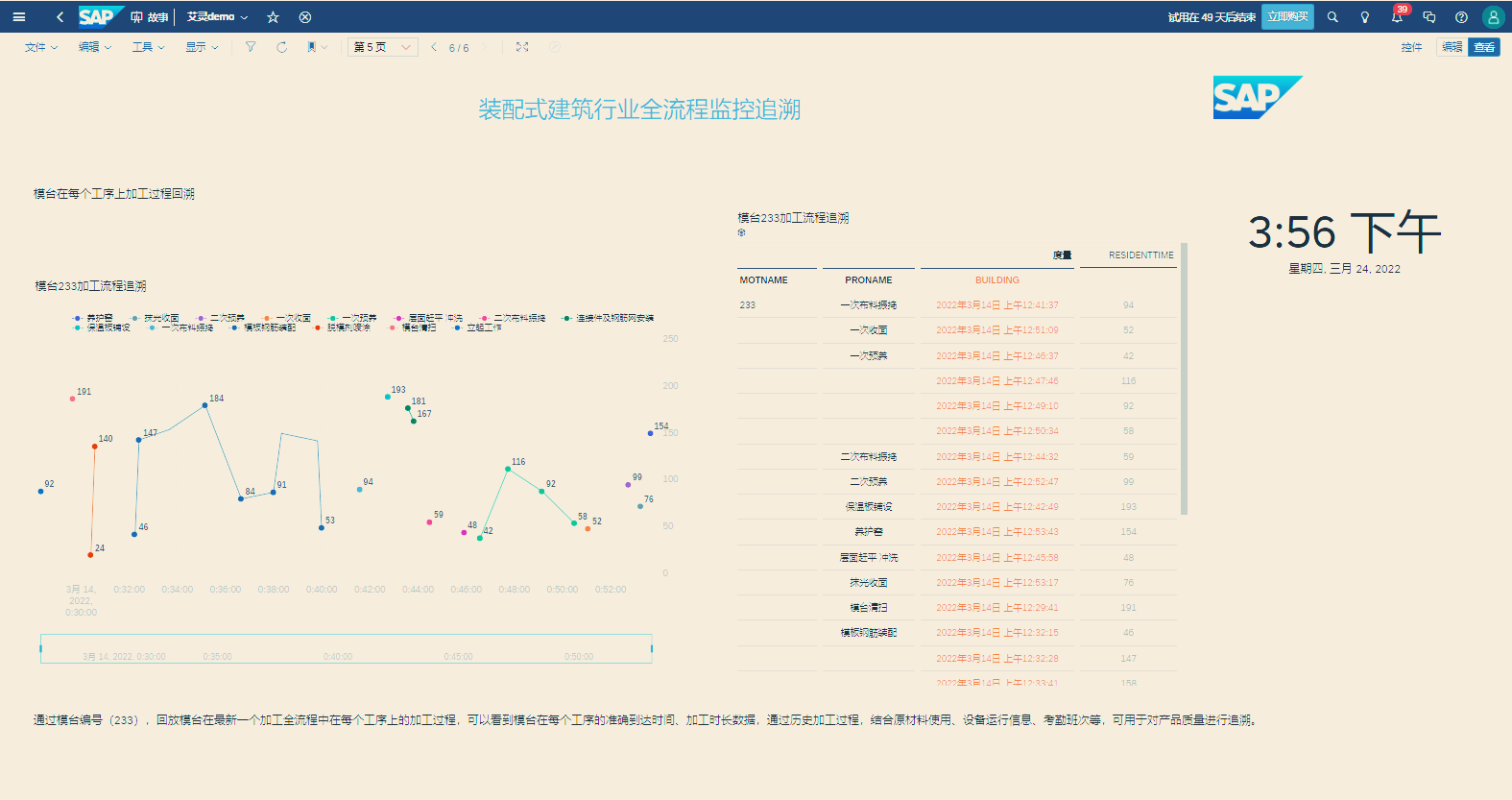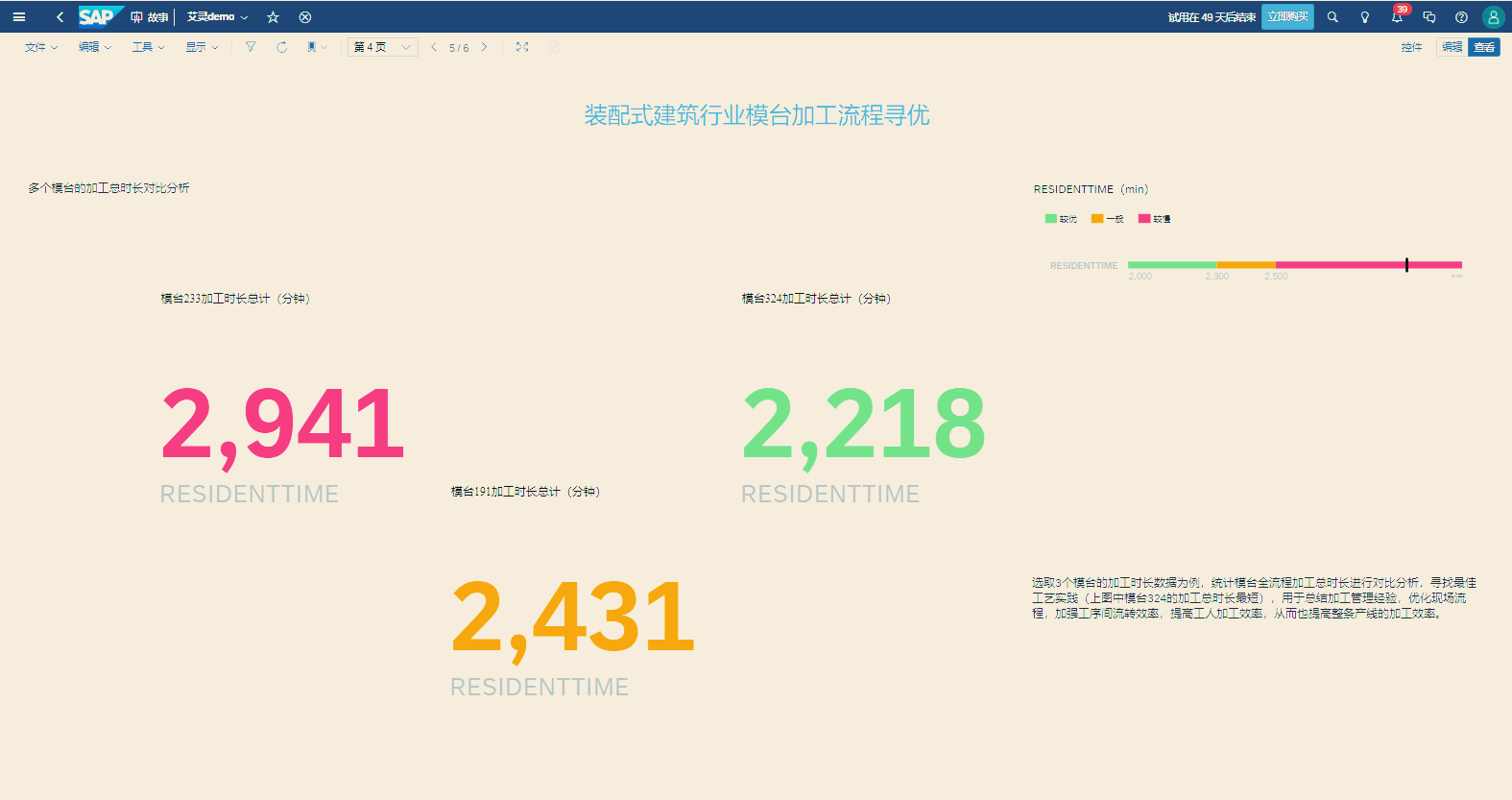AILINK Network & SAP Pioneering Private 5G <> Edge <> Cloud
Preface
Prefabricated building requires the transfers of a large number of on-site work in traditional construction to be completed instead at prefabricated building factory. The building components (such as floors, wall panels, stairs, balconies, etc.) are produced in the factory and then transported to the construction site, assembled and finally installed on-site. Because of its advantages of short construction period, energy saving and environmental friendly, as well as offering higher quality and safety through easy construction, it is becoming increasingly adopted in China and globally.
The components used in prefabricated buildings mainly include concrete, steel and wood structures. The concrete structure includes PC prefabricated components, light partition board and steam pressurized concrete components. Taking PC prefabricated components as an example, the complete production line includes more than 10 production processes such as oil coating, steel network installation, insulation board laying, drapery vibrating, and mold removal etc.,.

Figure 1 The PC prefabricated building component manufacture procedure
Project Background
The customer is a large construction enterprise in China that belongs to the global top 500. As prefabricated buildings becoming mainstream, PC component business was developing rapidly. At the same time, the customer faced the traditional manufacturing "growing pains". For example, production progress was not intuitively presented to factory manager, production status not be grasped in real-time, product quality problems not be traced reliably as well as production capacity utilization not be calculated accurately. The customer was eager for digital transformation to resolve these above-mentioned challenges. Its management hoped to understand production status in real time through digital transformation, to make further progress in cost reduction and to better manage efficiency.
This customer planned to deploy cable network and RFID reader to acquire production digital data. Due to the large factory area (i.e., 180,000m2 footprint, 47,600m2 indoor production area and 50000m2 warehouse), the cable based network construction cost could be potentially very high. Production conditions is very complex and RFID readers could frequently be damaged with cabled connections. High temperature, humidity and frequency vibration could all lead to cable connection solution with problems such as low RFID reading reliability, shortened life and high operation and maintenance cost.
AILINK and SAP jointly provided SCADA (Supervisory Control And Data Acquisition) and workshop intelligent cockpit solution based AI, edge computing, private 5G and cloud-based analysis tools to the customer and realized reliable monitoring of the whole manufacturing process. Such kind of solution interworked with customer’s MES (Manufacturing Execution System) to support lean manufacture management via field data analysis based on SAC (SAP Analytic Cloud).

Figure 2 Aerial view of the prefabricated building manufacturing factory
Solution Introduction
The solution includes following components:
- AILINK’s private 5G connects industrial camera and transmits on-site videostreams to its edge cloud platform. AILINK’s industrial AI software (e.g., OCR inspection algorithm) detects the OCR label of prefabricated components on the production platform, calculates their positions and manufacturing time length of each process;
- Customer’s MES acquires these data from the AILINK edge cloud platform and transfers them to SAC via OData interface;
- SAC analyses the process bottleneck, monitors whole manufacturingcapacity utilization, traces the monitor result and gives out process optimization suggestions. The visual graphical reports provides reference guidance to factory manager for lean manufacturing management.
Following table illustrates all the relevant components of the system:
IoT sensor | Industrial camera |
5G UE | AILINK 5G DTU AL614 (Data Transfer Unit) |
Network | AILINK Private 5G+Edge Computing+AI software |
Manufacture IT system | Customer’s MES |
Data Analysis system | SAP Analytic Cloud |
Value proposition
1. Prefabricated buildingmanufacturing intelligence cockpit
As depicted in following figure, SAC outputs a dashboard to illustrate the time length of each manufacture process, time length distribution and sorting of each manufacture process so that the overall situation of the manufacture process is shown to assist business decisions.

Figure 3 prefabricated building workshop intelligent cockpit dashboard
2. Manufacturing process bottleneck analysis
As depicted in following figure, SAC intuitively presents the processing time ratio and the longest manufacturing process of each workshop platform. The customer may optimize the manufacturing process flow based on bottleneck analysis result.

Figure 4 manufacturing process bottleneck analysis dashboard
3. Manufacturing capacity monitoring
As depicted in following figure, SAC intuitively presents the capacity of each manufacturing process, each prefabricated component and each project. SAC can deduce and output latest manufacturing progress.

Figure 5 manufacture capacity monitoring dashboard
4. Manufacturingprocedure monitoring and trace-ability
As depicted in following figure, SAC presents the whole manufacturing procedures. By trace-ability of historical data, raw material & equipment information, worker shift, the product quality can be tracked.

Figure 6 manufacture procedure monitoring and trace-ability dashboard
5. Manufacturingprocedure optimization
As depicted in following figure,SAC presents the time length of each production platform and output the manufacturing procedure optimization suggestion.

Figure 7 manufacturing procedure monitoring and trace-ability dashboard
Summary
With the assistance of AILINK’s Private 5G+Edge solution, the manufacturing monitoring video streams can be transported in super high uplink throughput to the edge cloud platform. The industrial cameras can be flexibly deployed without wiring which has much smaller impact to the factory production and operation procedures; this helps with speeding up the rapid establishing of the whole manufacturing process perception capability for the customer.
With the help of SAP SAC, the video monitoring steams of each production platform is acquired from AILINK edge computing and each manufacturing procedure is intuitively presented in the dashboard; the factory manager can grasp the whole manufacturing situation in real time. By using SAC cloud-based analysis tools, the average manufacturing time length of each process can be calculated, and the causes of manufacturing abnormality in each production platform can be traced. Further, based on the manufacturing data analysis, the manufacture procedure can be optimized to promote the production efficiency and reduce the cost.